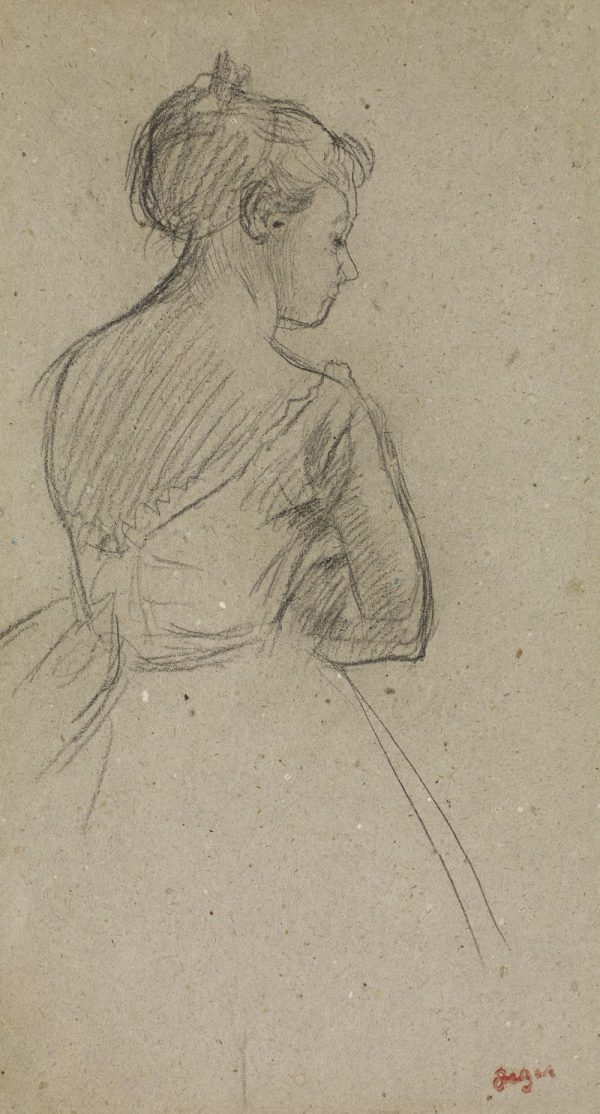Ballet Dancer’s Profile, Ca. 1885.
Black pencil on grey paper., H. 0.33 mm; W. 0.175 mm
Bears lower right the red stamp of the studio’s sale, ref. Lugt 658.
Bears on the back lower right the studio’s stamp, ref. Lugt 657.
Provenance: Degas’s studio, IIIrd sale, Paris, April 1919, no. 278b.
Private collection, France.
Catalogue des tableaux, pastels et dessins par Edgar Degas et provenant de son atelier. Vente à Paris, Galerie Georges Petit, les 7, 8 et 9 avril 1919, described and reproduced p. 241, no. 278b.
The art of Degas reflects a concern for the psychology of movement and expression and the harmony of line and continuity of contour. These characteristics set Degas apart from the other impressionist painters, although he took part in all but one of the eight impressionist exhibitions between 1874 and 1886.
Degas was the son of a wealthy banker, and his aristocratic family background instilled into his early art a haughty yet sensitive quality of detachment. As he grew up, his idol was the painter Jean Auguste Ingres, whose example pointed him in the direction of a classical draftsmanship, stressing balance and clarity of outline. After beginning his artistic studies with Louis Lamothe, a pupil of Ingres, he started classes at the École des Beaux Arts but left in 1854 and went to Italy. He stayed there for five years, studying Italian art, especially Renaissance works.
Returning to Paris in 1859, he painted portraits of his family and friends and a number of historical subjects, in which he combined classical and romantic styles. In Paris, Degas came to know Édouard Manet, and in the late 1860s he turned to contemporary themes, painting both theatrical scenes and portraits.
In the early 1870s the female ballet dancer became his favorite theme. He sketched from a live model in his studio and combined poses into groupings that depicted rehearsal and performance scenes in which dancers on stage, entering the stage, and resting or waiting to perform are shown simultaneously and in counterpoint, often from an oblique angle of vision.

